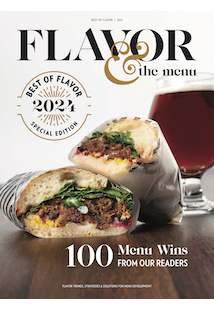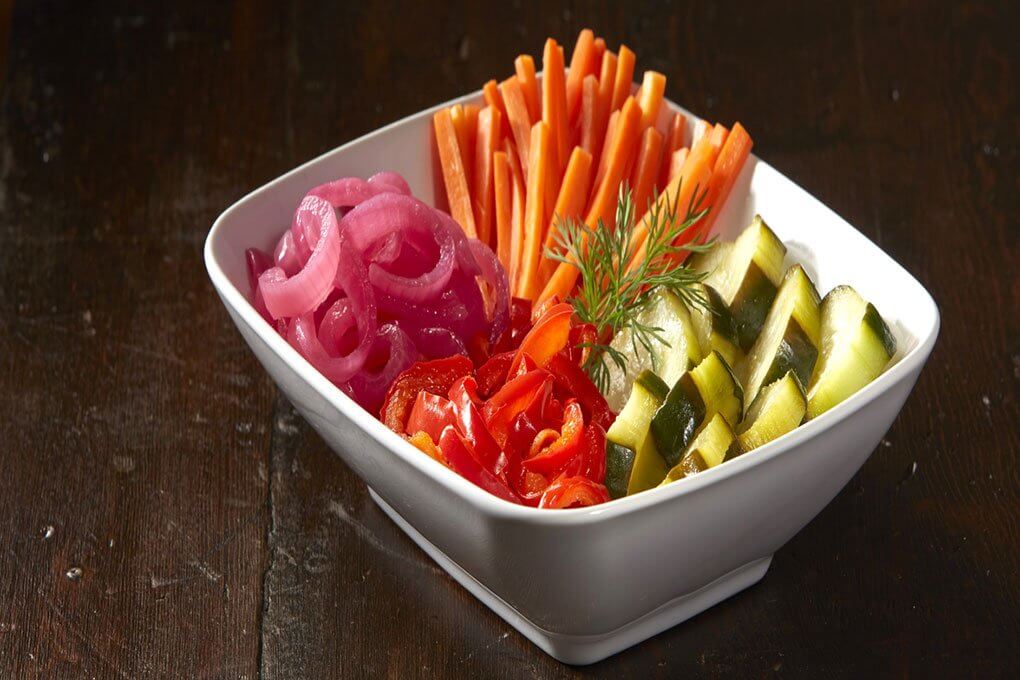One of the offshoots of the veg-centric movement has been a renewed interest in crudités as a platform for seasonal, fresh vegetables presented beautifully with flavor forward dipping sauces.
For example, Cafe Clover in New York serves the Market Crudité with celery hearts, radishes, baby turnips, romanesco, fennel bulb and colored plum tomatoes, accompanied by a trio of dips: green goddess, creamy tonnato and black sesame ranch.
Boeufhaus in Chicago serves its crudités on a bed of ice, the metal bowl filled with a colorful combination of bell pepper, green beans, a trio of colored carrots, daikon, scallions and frisée, served with a creamy green goddess dotted with herb and citrus oils and pomegranate seeds.
“As is increasingly the practice in all vegetable cookery in restaurants, chefs are leaving more of the crudités vegetables in their whole state, or minimizing the peeling and trimming in order to retain the green stems and tops and create a more natural, farm-to-table appearance,” says Gerry Ludwig, consulting chef with Gordon Food Service.
Pickling either all or some of the vegetables presented as a modern shareable make the crudités a signature. Crisp green beans, baby zucchini, rainbow carrots, fennel, cauliflower and watermelon radish—all take on a bright, acidic tone when pickled.
“The Pumpkin Hummus at Rouge Tomate in New York features a creative assortment of crudités, a combination of raw, cooked and pickled vegetables,” says Ludwig.









